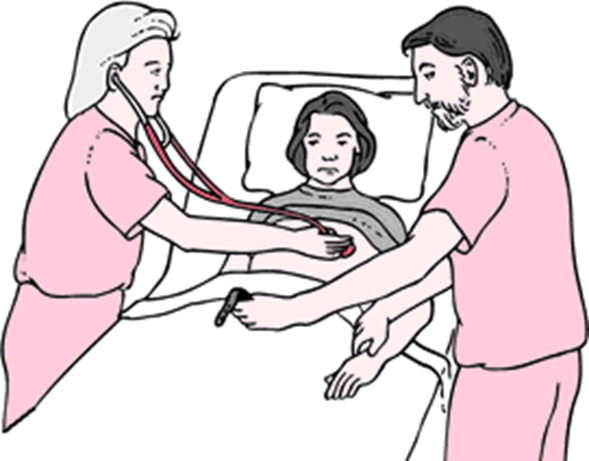A nurse in a PACU is caring for a client who is postoperative. Which of the following findings should the nurse report to the provider?
Capillary refill is less than 1 second.
Presence of a pulse deficit.
Systolic blood pressure is 10 points lower than before surgery.
Pulse oximetry is at 96%.
The Correct Answer is B
Choice A rationale:
A capillary refill of less than 1 second is a normal finding and indicates adequate peripheral perfusion. It is not a cause for concern in this postoperative client.
Choice B rationale:

The presence of a pulse deficit should be reported to the provider because it suggests a discrepancy between the apical and radial pulses, indicating potential cardiovascular compromise or inadequate arterial perfusion.
Choice C rationale:
A systolic blood pressure 10 points lower than before surgery can be a normal response to anesthesia or surgery and may not necessarily require immediate reporting unless accompanied by other concerning symptoms or vital sign abnormalities.
Choice D rationale:
Pulse oximetry at 96% is within the normal range for oxygen saturation and does not warrant immediate reporting. However, if the client is experiencing respiratory distress or other concerning symptoms, it should be addressed promptly.
Nursing Test Bank
Naxlex Comprehensive Predictor Exams
Related Questions
Correct Answer is ["B","D"]
Explanation
Choice A rationale:
Lurasidone does not necessarily need to be taken on an empty stomach. It can be taken with or without food.
Choice B rationale:

Avoiding grapefruit juice is essential with lurasidone as it can interfere with the drug's metabolism and increase the risk of side effects.
Choice C rationale:
Changing positions slowly is relevant for medications that can cause orthostatic hypotension, but lurasidone is not typically associated with this side effect.
Choice D rationale:
Lurasidone can cause insomnia in some individuals, so it is important for the client to be aware of this potential side effect. It is best taken in the evening to minimize this effect.
Choice E rationale:
While involuntary movements (extrapyramidal symptoms) can occur with some antipsychotic medications, lurasidone has a lower risk of causing these side effects compared to older antipsychotics. It is not a major concern with lurasidone treatment.
Correct Answer is B
Explanation
Choice A rationale:
A PT (Prothrombin Time) of 12 seconds is not indicative of the effectiveness of heparin therapy for a pulmonary embolism. PT measures the extrinsic pathway of the coagulation cascade, and it is more relevant to monitor in patients on warfarin therapy.
Choice B rationale:
The aPTT (Activated Partial Thromboplastin Time) of 75 seconds is the correct choice as it reflects the effectiveness of unfractionated heparin therapy. Heparin works by inhibiting clotting factors in the intrinsic pathway, and the aPTT is used to monitor heparin's anticoagulant effect. The normal range for aPTT is typically 25-35 seconds.
Choice C rationale:
An INR (International Normalized Ratio) of 1.1 is not the appropriate parameter to assess the effectiveness of heparin therapy. INR is primarily used to monitor the effectiveness of oral anticoagulants like warfarin, not heparin.
Choice D rationale:
The platelet count of 200,000/mm² is not a suitable parameter to evaluate the effectiveness of heparin therapy. Platelet count is important for assessing the risk of bleeding or clotting disorders but does not directly measure the impact of heparin on clotting factors.
Whether you are a student looking to ace your exams or a practicing nurse seeking to enhance your expertise , our nursing education contents will empower you with the confidence and competence to make a difference in the lives of patients and become a respected leader in the healthcare field.
Visit Naxlex, invest in your future and unlock endless possibilities with our unparalleled nursing education contents today
Report Wrong Answer on the Current Question
Do you disagree with the answer? If yes, what is your expected answer? Explain.
Kindly be descriptive with the issue you are facing.
